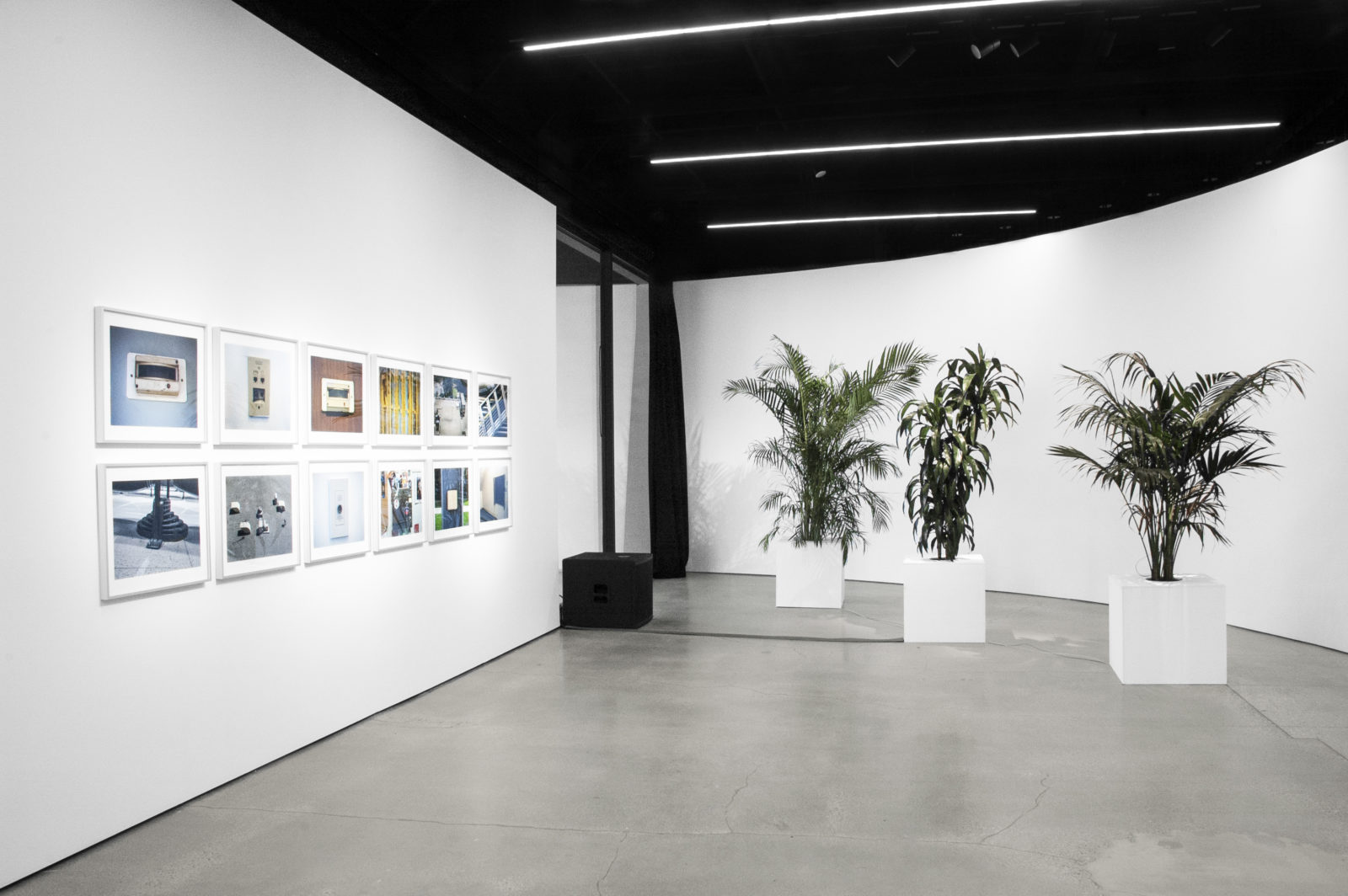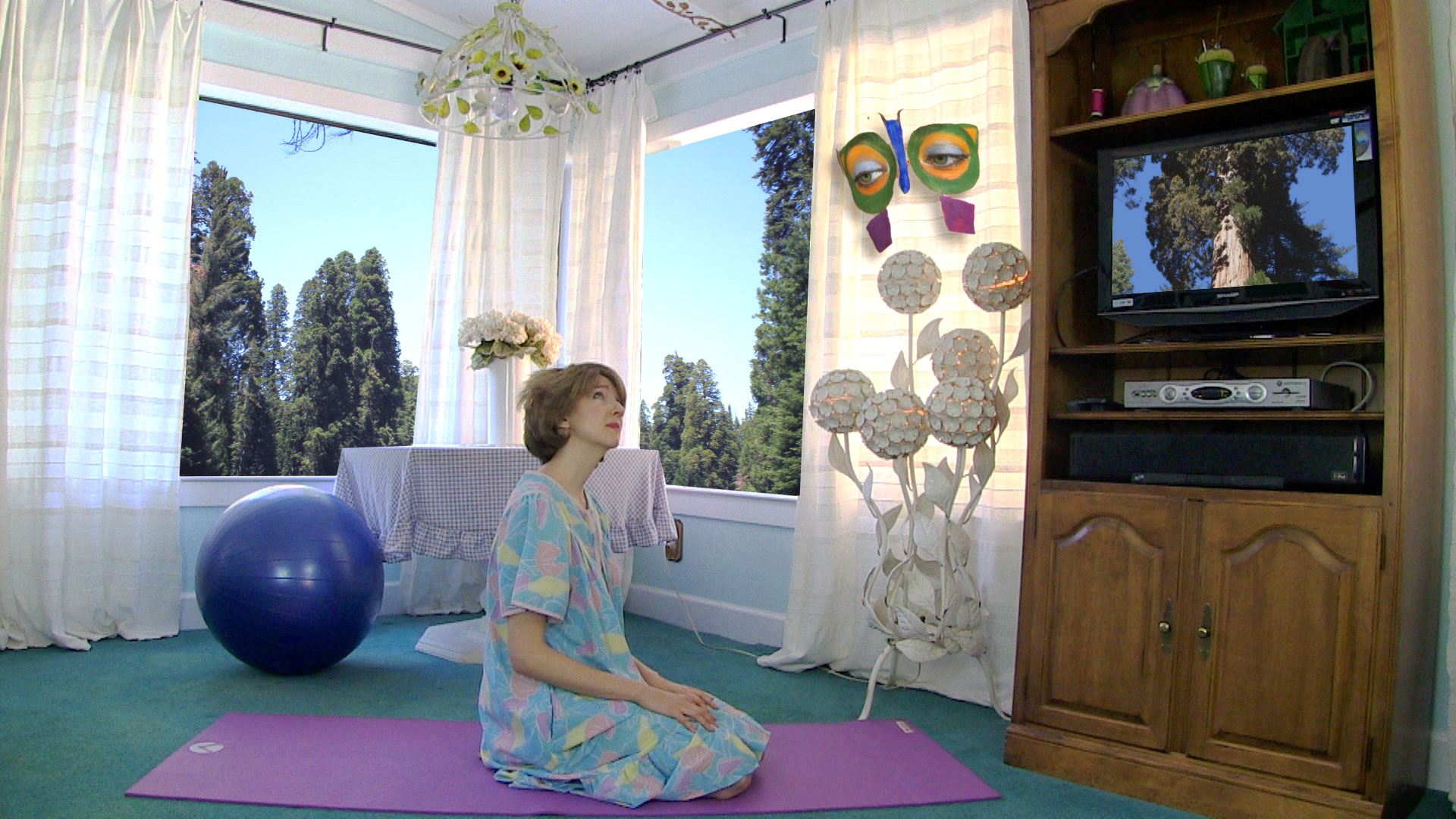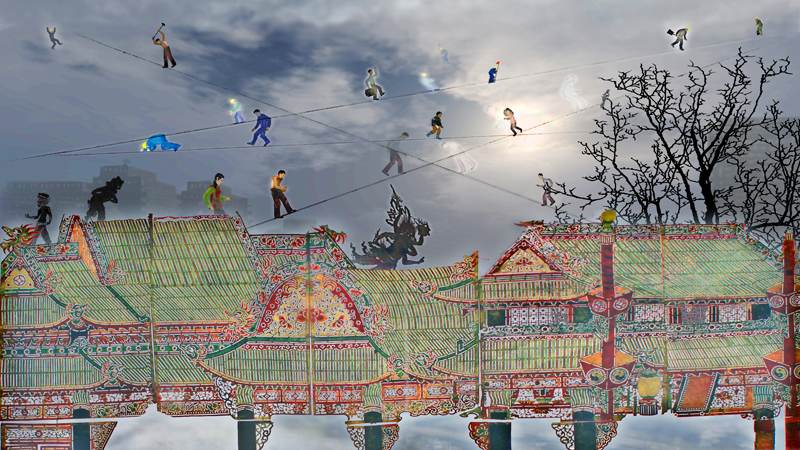Art in 2020: A Look Back on Work in a Year Like No Other

Installation shot of Julia Christensen: Upgrade Available by Julia Christensen, at Mullin Gallery, ArtCenter College of Design, fall 2020. Photo by Ian Gonzaga.
Looking back at the Creative Capital Projects that premiered over the course of a year provides a glimpse at the state of the contemporary art world, painting a picture of what interests artists and how they are looking to the future. In 2020, a year like no other, we would be remiss if we only celebrated the art projects that premiered without also acknowledging the unprecedented challenges and uncertainty artists are now facing.
During the first wave of COVID-19 earlier this year, a comprehensive survey of about 20,000 creative workers by Americans for the Arts found that 95% reported a loss of income from their practices, while nearly 62% said they had become fully unemployed because of the pandemic. It’s difficult to know for sure how this enormous health crisis and economic shutdown will affect artists and their work in the coming years, but we do know that the loss is already extensive. This report provides a slice of how artists in all disciplines across the country have dealt with the upheaval, how it has affected their work, and how they are facing seemingly insurmountable obstacles.
While artists spend years working towards the moment they can share their projects with the public, many of their carefully planned debuts were complicated even further with the pandemic. But artists excel at responding creatively to unique situations. In this article we review the Creative Capital Projects that premiered this year, and some that didn’t.
This year emphasized the delicate ecosystem on which artists rely to make and present their work, and made clear just how much we depend on art. In difficult times, though, artists are often among the hardest hit—Creative Capital strives to be a source of support and strength. If you feel as strongly about supporting forward-thinking artists as we do, consider a donation today.
eteam – Grabeland
The making of Grabeland demonstrates how artists use a range of disciplines to accurately tell a story. Known for their work that uses technology and media in stark new ways, eteam purchased a plot of land in Germany, sight unseen, on eBay, and set out to work on a performance with the tenants who owned gardens there. When a video piece didn’t exactly capture their experience, they began working on a novel despite having no background in fiction writing. The technology and performance project therefore became the novel Grabeland, published by Nightboat Books.
For writers, in-person events at book stores and other arts institutions are a crucial way to access new audiences. At the beginning of 2020, eteam had scheduled a series of talks, readings, and performances to celebrate the release of the novel. “We did two real life book launches for Grabeland two weeks before the lockdown occurred, which were wonderful and experimental,” said eteam, but soon after, their in-person events were canceled. They were able to pivot their event at the Goethe-Institute in New York to a Zoom presentation, “which was really well attended and had a great energy.” Around May, however, they noted “Zoom fatigue hit,” and decided to put everything on hold.
As their first foray into novel writing, eteam found the book format was a resilient way for accessing their art. “We feel very lucky that our product is a book,” they wrote. “It took more than ten years to perform, write, and publish this novel, and we experienced many setbacks and slowdowns in producing this work, yet in retrospect it was exactly that which turned out to be fundamental, in what we wanted to communicate.” Eteam hope to resume their book tour when a vaccine is available.
Robin Frohardt — The Plastic Bag Store

An item found in The Plastic Bag Store by Robin Frohardt.
Robin Frohardt specializes in puppet theater, and she has expanded what that means with her immersive installation, performance, and video piece in The Plastic Bag Store, which humorously looks at humanity’s obsession with plastic. The store was set to open in March at Times Square as a fake grocery store of products made entirely from plastic bags. At night, the installation would become a theater for a speculative fiction puppet show about what our plastic waste might say about us.
Several years in the making, The Plastic Bag Store was an ambitious project that needed the right elements to fall into place to be experienced completely. Working with Times Square Arts Alliance felt like a perfect partnership for Frohardt, but the show was set to open around the exact time that the pandemic shut down New York. The installation sat in a space in Times Square for months, only to finally open in October, as a scaled back version without the live puppet theater performance. Despite these setbacks, the exhibition was a success, receiving glowing profiles in New York Times, Open Culture, and more. In addition to naming The Plastic Bag Store as one of the best Broadway Theater shows of 2020, the New York Times wrote that it “is an emphatic work of activism that is also a wistful work of art.”
Read our interview with Frohardt
Faye Driscoll — Thank You For Coming
Faye Driscoll’s Creative Capital Project, Thank You For Coming—a series of performances that explores how we experience ourselves in relation to other bodies—has been performed in different iterations in venues across the country for years. The work was set to culminate in an unprecedented exhibition looking back on the trilogy of iterations, Attendance, Play, and Space, at the Walker Art Center in Minneapolis at the end of February. The exhibition was open for 2 weeks before the Walker pivoted the show to an immersive website designed to capture some of the interactivity, audio, and visual components of the exhibition.
She is making further live adaptations of the exhibition audio pieces, called Guided Choreography for the Living and the Dead, specifically made for this isolated and distant moment. Recently, Miriam Felton-Dansky wrote that the adaptation was “experiential training in how to inhabit this unbearable new world.” Driscoll is also working on a future culmination of her Creative Capital Project, and more details will be forthcoming in 2021.
“With my book tour and several other book events abruptly canceled, I reached out to Creative Capital for help answering a question I never dreamed of asking: how to launch a novel in a global pandemic?” — Jessica Anthony
Julia Christensen — Upgrade Available
Julia Christensen is a multidisciplinary artist whose work can be experienced on many different levels—her project, Upgrade Available, is a book and a visual art exhibition that explores our collective obsession with upgrading technology. While the book was published by Dancing Foxes Press in June as planned, the exhibition at ArtCenter in Pasadena was postponed because of the pandemic, and then again due to fires in California.
The show was finally installed in September, although the gallery remains largely inaccessible to the public due to ArtCenter’s pandemic response. The exhibition was recently extended to March 28 in the hopes that conditions will improve this spring so that the building can re-open. Like many artists this year, Christensen has relied on virtual talks, articles, and interviews to publicize her work, including a conversation on our Instagram live. Several publications have covered the many facets of Christensen’s project, including a recent article on how she is working with NASA scientists on technology that can upgrade itself for a potential trip to Proxima B, the closest habitable planet to Earth.
Read our interview with Chistensen
Todd Chandler — Bulletproof
While Todd Chandler’s Creative Capital Project, Bulletproof, wasn’t set to premiere to the wider public in 2020, it did begin this year’s limited film festival circuit including Festival dei Popoli in Italy, Maryland Film Festival, and Canada’s Hot Docs where he received the International Emerging Filmmaker Award. The documentary explores the rituals that take place in and around American schools, asking what it means to be for students and faculty to be safe in those spaces.
With many major film festivals canceled this year, Chandler said he missed the feedback that early screenings provide. However, in addition to the festivals that took place in virtual form, Chandler also showed the film at a handful of screenings around the world, including drive-in theaters around the US, and in-person international theaters. The film is set to premiere widely sometime in 2021.
Jessica Anthony — Enter the Aardvark
Enter the Aardvark is Jessica Anthony’s third novel. The book takes a humorous look at a fictionalized Republican congressman whose career is ruined by a surprise arrival of a taxidermied aardvark on his doorstep.
While most publishing dates continued as planned during the pandemic, the new restrictions certainly changed strategies around book launches. Anthony received a Creative Capital Award for the project in 2013, and Little, Brown & Co. published the book this year on March 24, as the worst of the pandemic began. The planned national publicity tour had to be canceled. “With my book tour and several other book events abruptly canceled,” Anthony wrote, “I reached out to Creative Capital for help answering a question I never dreamed of asking: how to launch a novel in a global pandemic?”
“Creative Capital wasted no time, and recognized immediately the serious challenge faced by artists launching their projects last spring. With their support, I was able to set up a makeshift TV studio for at-home digital literary readings and conversations (a digital tour which has continued into this year, with the pending release of the paperback). And while it was gutting not to be able to meet readers and sign books in person, I was also able to use Creative Capital funds to design Enter the Aardvark bookplates that I signed, and sent out in mass mailings here in the USA and overseas.”
“Creative Capital really came through for me in a crisis, and for their help I am deeply, deeply grateful.”
Read our interview with Anthony
Shana Moulton and Nick Hallett — Whispering Pines 10

Film still from Whispering Pines 10 by Shana Moulton and Nick Hallett.
Shana Moulton and Nick Hallett’s Whispering Pines 10 has been shown at galleries as an installation, digitally (via platforms like the New Museum), as a standalone video, and in theaters and museums as a live performance. In early spring, Moulton and Hallett decided to acknowledge increased time in front of screens during lockdown and yearning for new, entertaining media. They promoted and released several never-before-seen videos of Whispering Pines 10 on their website.
Coincidentally, the content of the videos explores a feeling that remains pervasive—indoor isolation. With their highly accessible and home-viewing appropriate work, Moulton and Hallett used Creative Capital’s assistance with outreach for their project premiere. “Creative Capital has been our rock during this pandemic,” Shana Moulton wrote afterwards. “The quick and strong response to the pandemic and constant support to the Creative Capital artists as well as all artists has been very encouraging.” Watch Whispering Pines as part of The Poetry Project’s 47th Annual New Year’s Day Marathon.
Read our interview with Moulton and Hallett
Percival Everett — Telephone
Percival Everett’s book is actually three in one—each version differs ever so slightly in details, including the ending, colophon, and book cover. This trick was a play on how the writer’s intention often is at odds with their audience’s understanding. It wasn’t completely necessary to know that there were three versions to enjoy the book—Everett intended for them to be more of an “easter egg” for close readers, and before publication, he delighted in imagining how book clubs would find this out on their own. However, the book was published in May, when the pandemic was still at its first peak for many states, so Graywolf Press and Everett decided to come public about the three versions.
The actual plot of the novel tells the story of a geologist who goes on a series of adventures to save a group of women in New Mexico that he believes is sending him notes in used clothing he orders online. While the versions weren’t discovered in the way that the author intended, the book and its conceit were well received—in one illuminating review, the Los Angeles Times read all three novels and explored where each version diverged.
“During this very difficult year, we have learned so much about the importance of being both consistent and forward-looking in art practice.” — Lily & Honglei
Srikanth Reddy — Underworld Lit
The humor of Srikanth Reddy’s hilarious book-length poem was evident from an early reading at the 2016 Creative Capital Artist Retreat. The book tells the semi-autobiographical story of a world literature professor who learns he has cancer and that his wife is pregnant at the same time. Published in August 2020 by Wave Books, Reddy said he was taken off guard by having to launch the book he had spent years working on during a pandemic.
“Creative Capital buoyed me again and again,” he wrote “by promoting my book to its brilliant community of artists and organizations, connecting me to a new group of exciting awardees as an artist advisor, and just generally always being there for me during these difficult times.”
Read our interview with Srikanth Reddy
Deborah Stratman — The Illinois Parables
Deborah Stratman’s essayistic film, The Illinois Parables, looks at the history of Illinois through eleven chapters or parables, starting with pre-Columbian Native American city of Chakoia in 600AD continuing to the mid-80s. The film actually premiered in 2016, receiving awards and critical acclaim. An exhibition built around the film at MCA Chicago gave new life to Stratman’s work, and shows how the work of artists can have various lives and continue on even after completion.
Read our interview with Stratman

Augmented Reality still from Shadow Play: Tales of Urbanization in China by Lily & Honglei.
Lily & Honglei — Shadow Play: Tales of Urbanization in China
“During this very difficult year, we have learned so much about the importance of being both consistent and forward-looking in art practice,” artistic collaboration Lily & Honglei wrote. They have been working on their project Shadow Play, which utilizes traditional art mediums and emerging technologies to visualize the metamorphosis created by urbanization in China, since 2013. The artists found the new focus on digital platforms during the pandemic encouraging, and spent the early part of 2020 enhancing their website, and interactive components of their project. “The effort paid off—in the summer of 2020, several art institutions from Europe, Asia and New York contacted us for digital art exhibitions in forms of video and interactive work, although some of them eventually were able to exhibit our work in physical spaces with a large audience visiting in person.” Lily & Honglei premiered their project online, and in person at Breezy Art Gallery in Rome, Italy.
Looking back on their work after the exhibition closed, Lily & Honglei wrote that “we have learned that when our world becomes increasingly global and connected with new technologies, it is worth investing more resources and time developing digital presentations that may enable more potential collaborations with art institutions across continents.”
Read our interview with Lily & Honglei
Meshell Ndegeocello — Chapter & Verse: The Gospel of James Baldwin
Meshell Ndegeocello has been working on some performative tribute to the writing of James Baldwin, a writer who continues to affect and change her life, for the past decade. The performance was a way to share the uplifting joy that Baldwin brought her with others, and it felt particularly poignant after the 2016 election. When Ndegeocello spoke to her collaborator and artistic director Charlotte Brathwaite in 2020, they agreed that to perform the work in a theater would feel not right for the time of 2020. Working with other artists, they created a series of audio recordings accessible by a free phone line, writings, and videos inspired by Baldwin, entitled Chapter & Verse: The Gospel of James Baldwin. A series of arts institutions, realizing the importance of the work but also the ingeniousness of making it accessible to all, have come together to present it to their audiences.
Read our interview with Meshell Ndegeocello
Steve Rowell — Uncanny Valleys, Remote Sensing
Steve Rowell has spent decades making art out of the various technologies that humans use to see, visualize, and listen to nature. His Creative Capital Project Uncanny Valleys, Remote Sensing was set to premiere at the Jordan Schnitzer Museum of Art in Eugene, Oregon, in the late summer, and then in December. Given continuing restraints on the state and schools, like the University of Oregon where the museum resides, the exhibition will open now in January, pending some events. We will post more details about this exhibition as it unfolds.
